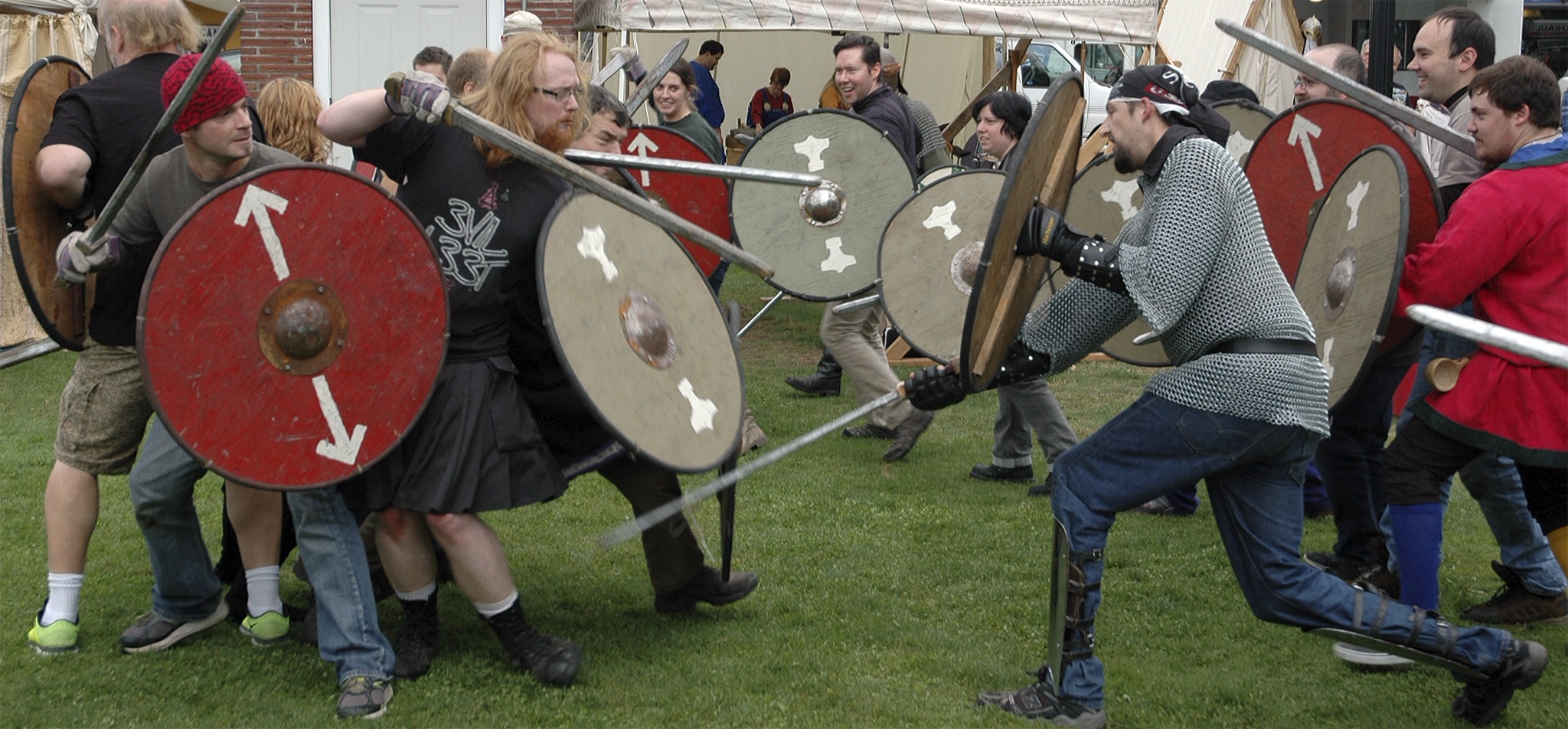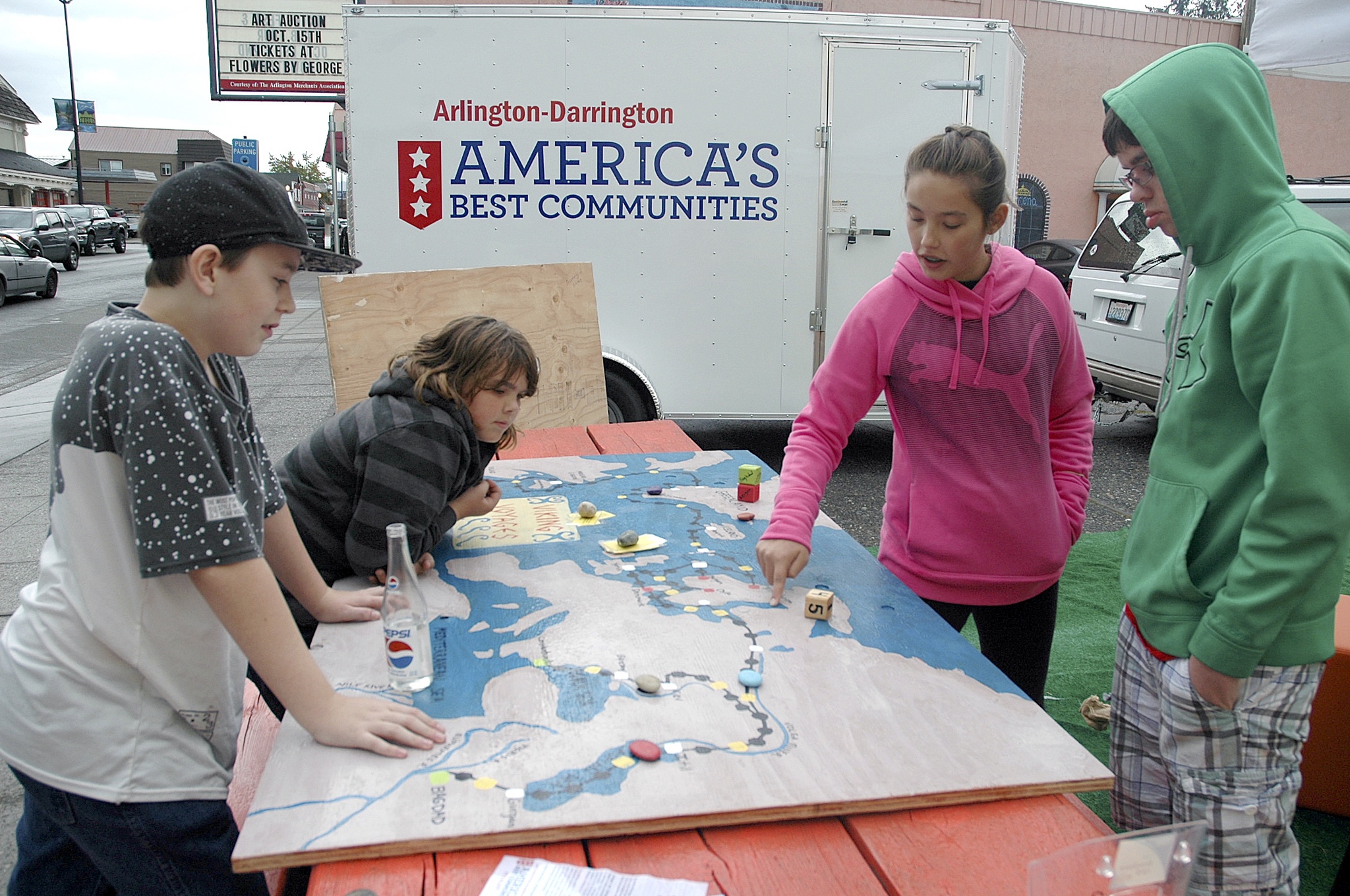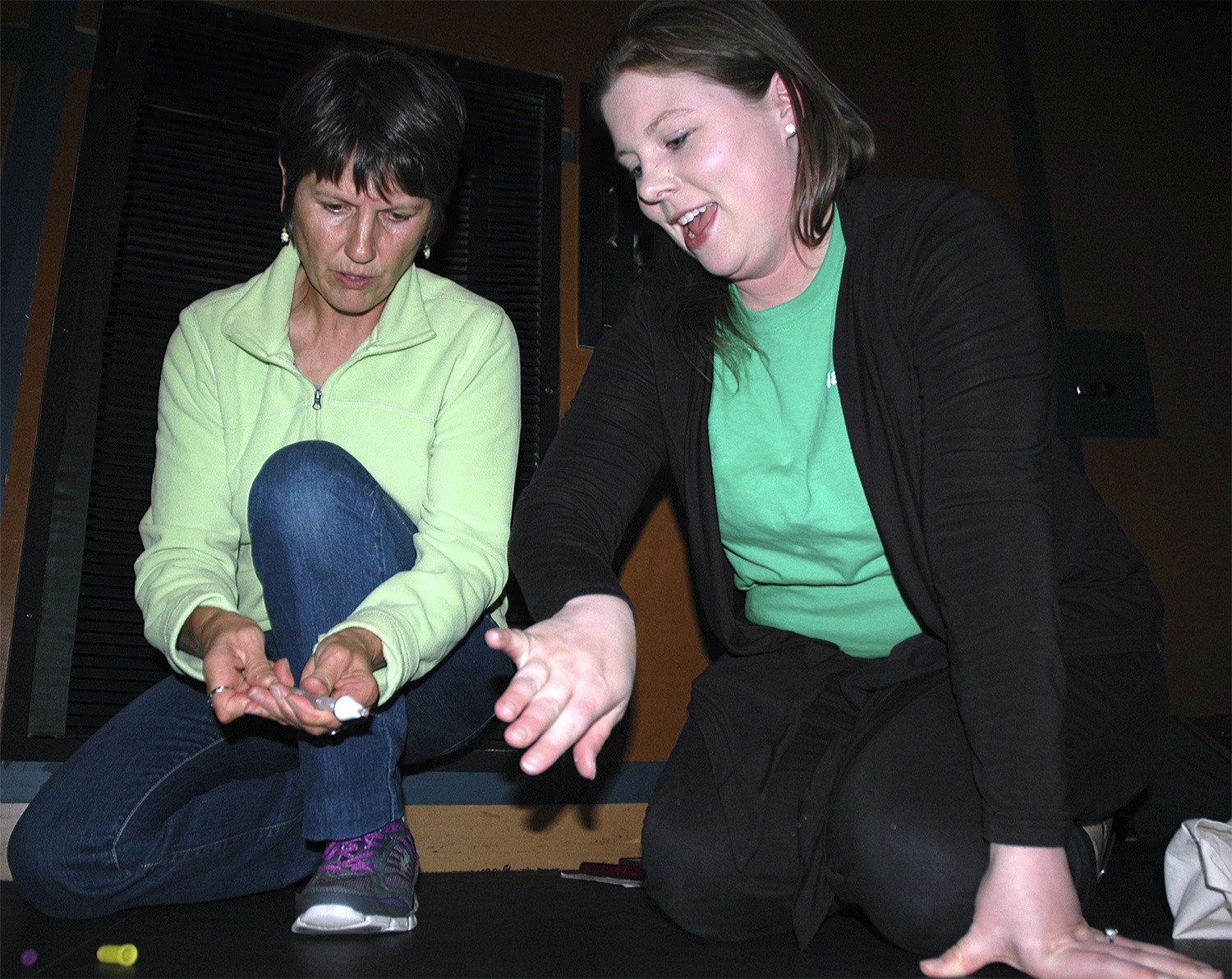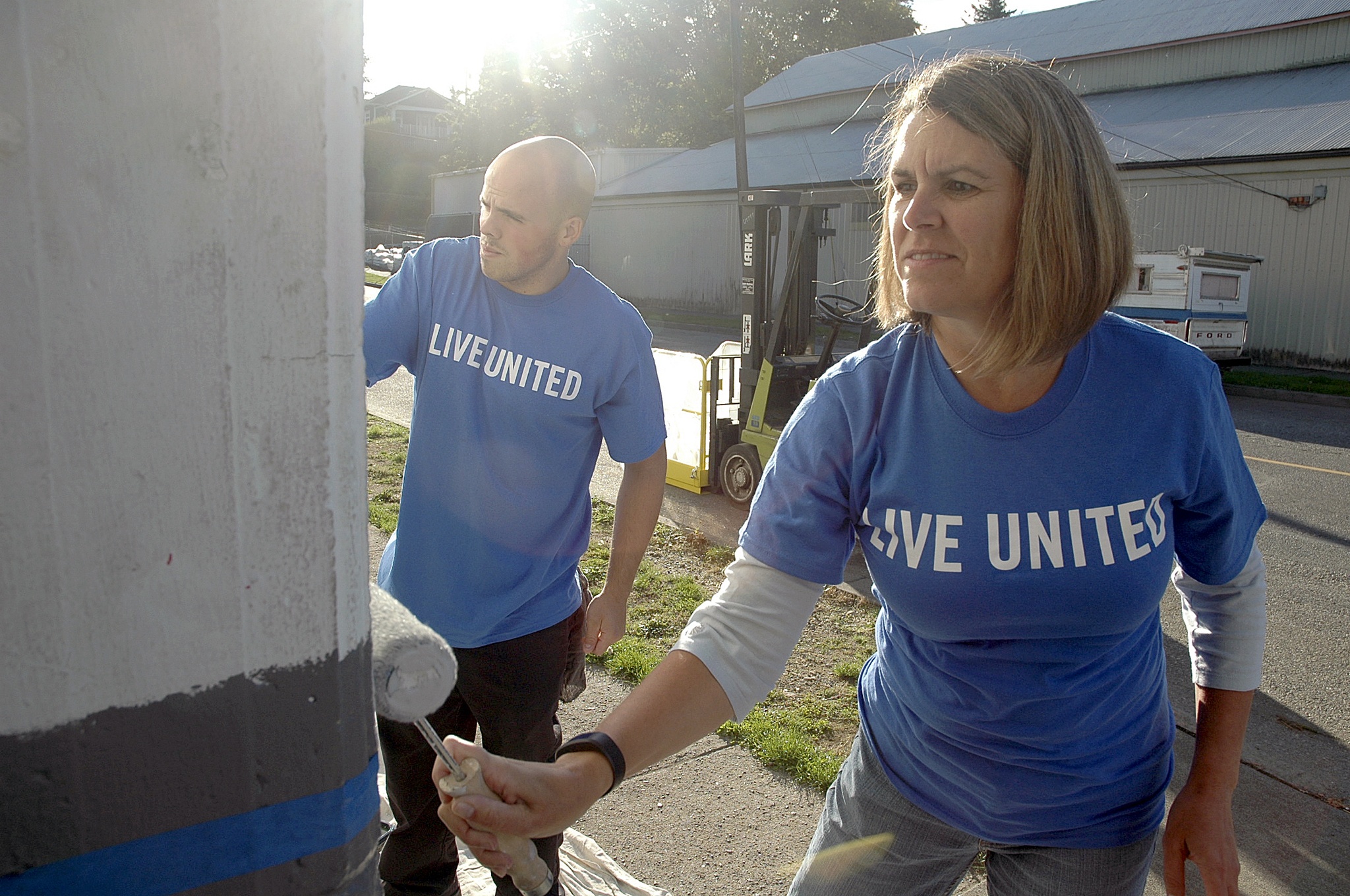ARLINGTON — Legion Park was transformed into a Viking village Oct. 1-2, as the Downtown Arlington Business Association’s Viking Fest returned for its second year of demonstrating historically authentic crafts and combat.
Matthew Puddicombe came from Seattle to shape metal trinkets in his portable forge, but he learned how to be a blacksmith during his high school years in Stowe, Vermont.
“I was a lonely kid who was into Lord of the Rings and Dungeons & Dragons, and I’d just moved to this small town,” Puddicombe said. “I begged the local blacksmith to take me on, and after I’d convinced him I wasn’t an idiot, he taught me what he knew.”
Puddicombe made a small hammer pendant for a necklace in the municipal parking lot, creating complex twists in the handle by cooling each portion in water, to lock it in place, after using the heat of his oven to make the metal malleable.
“I love that this is such a tactile creative art form,” Puddicombe said. “I beat things into the shapes that I want, which is very Swedish.”
Blacksmithing is a labor of love for Puddicombe because it tends to cost him more money than he makes from it, he’s been able to apply some of those skills to his paid job as a professional metal worker and sign installer.
Over on the green, Gabrielle Taylor put her more practical but less-glamorous period-appropriate skills to use, by redoing the leg wrappings of fellow Bellingham resident Patrick Lafferty.
“They just tend to slide a little bit,” said Taylor, who was decked out in her own Nordic-themed attire. “These bindings offered better protection for your legs in the cold weather, and were fashionable in the 10th century.”
The Bothell Sons of Norway brought the full spectrum of Viking-themed fare to the festival, from a scaled-down model boat that kids could climb into, to a demonstration on how to grind barley into wheat to bake flatbreads.
Diana Hicks explained that this chore could take hours and was considered appropriate for small children.
“It was considered safe for kids as young as six, who could just sit by the fire and grind out flour,” Hicks said. “They typically needed to replenish their stock every two to three days, since its oils would go bad.”
Alice Stephenson got to demonstrate a bit more dramatic flair through her tablet-weaving, as she explained how that specific form of weaving dated back to 1500 BC.
“They’ve found swatches of card-weaving in the tomb of Ramses II in Egypt, and in ancient China,” said Stephenson, who prefers to go by the name Hrotsvitha, after the first recorded German playwright in history. “It’s been used for decorative embroidery, for belts, for horse harnesses and neck straps. It washes better than leather, and it’s stronger depending on how it’s used.”
Across the field, where veterans and amateurs took up wooden arms for rounds of mock-combat on the “shield wall,” Olaf Silverfinger offered fellow Seattleite Gabriel Laigo some tips on axe-throwing.
“It’s not about power as much as it is about momentum,” Silverfinger said. “As you throw the axe, you should feel it being pulled out of your hand. That’s why the handle is tapered, so that it’ll slide out easier.”
As with any skill, Silverfinger also advised would-be practitioners to be patient. “If you fail your first time out, you’re not a failure,” Silverfinger said.
Silverfinger came into axe-throwing five years ago, after a lifetime of chopping and whittling wood on his family’s farm. He credited Sven Lugar with teaching him the art. On the other side of the gazebo, Lugar was demonstrating Historic European Martial Arts, or HEMA, with another of his pupils, Doug Mayovsky.
Mayovsky explained that HEMA researches combat manuals and other historic documents to recreate how people actually fought, albeit with additional safety precautions to ensure that today’s recreations have less-fatal outcomes.
“Actual sword fights usually only lasted about five seconds, before someone dropped to the ground dead, so we try to make it last longer, because we don’t want to lose our fighting partners,” said Mayovsky, who’s nonetheless sustained significant bruising, and even lost a fingernail or two, over the course of his career. “All sword fighting basically comes from wrestling.”







